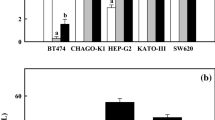Abstract
A chromatographic method utilising Sephadex C-25 as an ion exchanger and molecular sieve permits both small and large scale separation of the constituents of snake venom. Cross-contamination of peak materials is diminished when Triton X-100 is incorporated in eluting buffers. Two long neurotoxins and two cardiotoxins isolated fromNaja naja (cobra) venom differ from other such toxins, isolated earlier, in their amino acid composition. Inorganic pyrophosphatase activity is found in snake venoms, and the more basic of the two cardiotoxins (cardiotoxin II) of cobra venom possesses intrinsic enzyme activity. The properties of the latter toxin as an enzyme have been studied. Enzyme activity does not seem essential for the protein to display cardiotoxicity. Cardiotoxin II, as isolated, contains four magnesium atoms per mole, which do not appear to be essential for its function. At least two atoms of magnesium per mole are required for the pyrophosphatase action.
The venom of two Indian scorpions (Buthus tamulus andHeterometrus bengalensis) are amenable to fractionation by chromatography on Sephadex C-25. Two fractions fromButhus tamulus elicit an initial hypotensive effect and then a hypertensive effect in rats. The former is cholinergic and the latter adrenergic in nature. Both fractions induce a biphasic contracture of the indirectly stimulated rat diaphragm. Of the two venoms, that ofButhus tamulus is more toxic to mice.
Similar content being viewed by others
References
Achyuthan K E and Ramachandran L K 1980Proc. Indian Natl. Sci. Acad. B46 603
Achyuthan K E and Ramachandran L K 1981J. Biosci. 3 149
Achyuthan K E and Ramachandran L K 1983J. Biosci. 5 1
Achyuthan K E, Agarwal O P and Ramachandran L K 1982Indian J. Biochem. Biophys. 19 356
Achyuthan K E, Ranganatha Rao K and Ramachandran L K 1980Indian J. Biochem. Biophys. 17 228
Bettini S (ed.) 1979Handbook of Experimental Pharmacology Vol 48Arthropod Venoms (Berlin: Springer-Verlag) p. 277–418
Charles A K, Gangal S V and Joshi A P 1981Toxicon 19 295
Chatwal G S and Habermann E 1981Toxicon 19 807
Dufton M J and Hider R C 1980Trends in Biochemical Sciences 5 53
Fontella-Camps J C, Almassy R J, Eslick S E, Suddath F L, Watt D D, Feldmann R J and Buggs C E 1981Trends in Biochemical Sciences 6 291
Lee C Y (ed.) 1979Hand Book of Experimental Pharmacology Vol 52Snake Venoms (Berlin: Springer-Verlag)
Ovchinnikov Yu A and Grishin E V 1982Trends in Biochemical Sciences 7 26
Shashidharan P and Ramachandran L K 1983Indian J. Biochem. Biophys. 20 132
Srinivasa B R, Achyuthan K E and Ramachandran L K 1982Indian J. Biochem. Biophys. 19 52
Yang C C 1978 in Rosenberg (ed.)Toxins: Animal, Plant and Microbial (Oxford: Pergamon Press) p. 261
Author information
Authors and Affiliations
Rights and permissions
About this article
Cite this article
Ramachandran, L.K., Achyuthan, K.E., Agarwal, O.P. et al. Toxic proteins of snakes and scorpions. Proc. Indian Acad. Sci. (Chem. Sci.) 93, 1117–1136 (1984). https://doi.org/10.1007/BF02863616
Issue Date:
DOI: https://doi.org/10.1007/BF02863616




